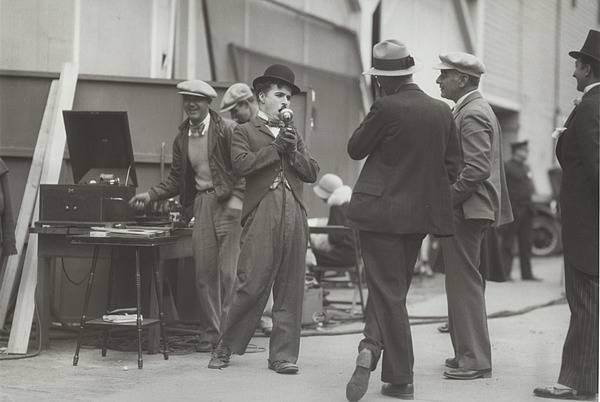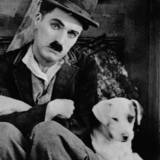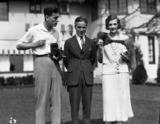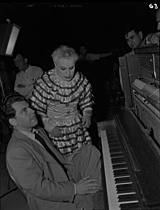Extract of draft typescript of “A Comedian Sees the World” by Charles Chaplin, 1932

“The day of completing the photographing of my picture was one of extreme relief. After fretting and stewing for almost two years, to see the end in sight was like the finish of a marathon. Usually after each picture I go to bed for a day or two to replenish my nerves, but this time there is another task ahead.
The composing of the music. This is something new since the advent of the talkies and took three weeks of la la-la-ing to arrange. After which another two weeks were necessary for recording it. I shall try to give you an idea of how this is done. Of course, there are two ways—one, the sound is recorded with the photographing of the picture and the other, a picture is taken silently and the sound put in afterwards. City Lights was the latter.
There is a large room about 100’ X 60’. At one end is a screen and the other a padded projection room. The orchestra sits in front of the screen. There are ‘fishing rods’ on wheels but instead of a fish at the end of the line; there is a microphone. These are placed meticulously about the orchestra. On one side there is a small sound-proof room on wheels big enough for a man to sit on. Here the occupant controls the sound which is transmitted to the main recording room where it is actually produced on film and disc. Before recording; the picture is run and music and sound effects are rehearsed. The man in the box tells if you are playing too loud, or whether your noise effects are properly timed with the action of the picture. When everything is perfected, the sound operator signals to the Recording Room and the to the Projection Room: The Projection machines are inter-locked so that they synchronize: then the sound effects are played to suit the action. One reel at a time is completed which is immediately played back for your approval. Something may be out of time. Then you must do it over again. I had a scene where I swallow a whistle. The whistle. This was very difficult to synchronize. We took the scene some eighteen times. Either the whistle was a little too soon or too late. Shooting a pistol is another difficult action to follow, because it happens so suddenly and the noise of the shot is liable to break the recording needle.
It took three weeks to synchronize my picture City Lights and I can assure you it was a most nerve-racking experience. Eventually everything was ready for the Premiere showing in Los Angeles.”


